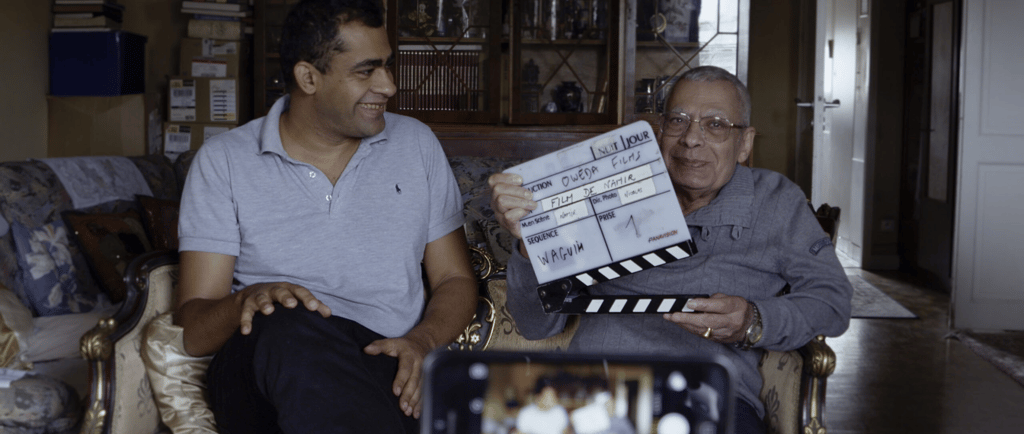Life After Siham: A Cinematic, Years Long, Therapy Session
REVIEWS
Alaa Tamer
10/10/2025


Namir Abdelmaseeh, father of two, son of two people and two worlds, wishes life was like a movie. This is not because he loves Cinema, even though he certainly does, a love he inherited from his father, as he is surprised to find out during the course of this film that his father worked in film in the 60s. Namir wants his life to be a movie because he wants control.
He confesses so himself in one scene in the extremely intimate, goosebumps inducing, autobiographic documentary “Life After Siham”, he says he wants life to be a movie he can reshoot and re-edit, where he can “Do another take.” In another scene, his aunt who raised him asks him for a cure for dementia, he says the only cure he has is his camera, that if they both forget this conversation ever happened, they have it recorded for a hundred years.
“Life After Siham” is about a lot of things, it's a film whose shooting took years and chronicles decades, edited and re-edited as much as those intimate autobiographies are. But one major theme is this relationship between real life and film, it's about a man trying to turn his real life into a film and contemplating if that is a good idea.
The catalyst for the film is the death of Namir’s mother, Siham, and the non-linear structure makes it both about her presence and her absence, jumping from footage he shot of her throughout her life, to footage of life after her, to old photographs, memories and letters, the mysteries of her life and the questions that will remain unanswered now that she is gone, and suddenly and interestingly, Namir starts to explore other parental and maternal figures that shaped his life. It also plays with footage from Yusuf Chahine’s “The Return of the Prodigal Son” turning its character into representations of his own parents (more on that later).
In the middle of all that, the film makes it a point to show that one of the earliest things Namir did at the day of his mother's funeral, is call his friend and ask him to come with a camera and shoot the whole funeral, to the disapproval of his father. Most documentaries use film to serve reality, “Life After Siham” does the opposite, reality is in service of cinema.
This is actually not the first documentary Namir makes. He shows footage of his mother dissatisfied with the documentary as a format, she tells him to make a “real” movie with actual actors, and not make his family the actors, and he promises her so. It's a promise Namir won't be able to keep, but he finds a clever loophole. With the extensive use of Chahine’s “The Return of the Prodigal Son” (and other Chahine films), he is actually using actors and dramatic scenes shot with professional quality, actors and scenes shot by another person, but he re-edits and repurposes them and makes them his own, in a beautiful instance of metafiction, of cinematic “sampling.” He is both trying to honor his mother’s wish (within budget), honor cinema that he loves, while also confronting the fact that maybe he can only look at life through the lens of cinema.
As mentioned above, there's a lot that Namir tries to unpack in this film, about himself and the world, going back and forth in the years it took to make this film. It's a cleverly edited stream of consciousness that still manages to be coherent as it shifts focus throughout its short and impactful runtime. It touches on how it feels like to be an Arab living in France, a Christian living in Egypt. It is about memory and legacy, about secrets and truths, about understanding yourself, and above all, about faith.
Whether it’s believing in a specific faith, or an afterlife, believing in art and yourself, or believing a story or a version of the past, the film feels like self-discovery, examination and therapy, feels like going through all stages of grief and beyond to building yourself anew. Namir exhibits a quality present in many true honest artists: he is very forgiving and loving for others, but very self-critical of himself.
The editing and emotional vulnerability make the whole thing work as it jumps years and countries and turn it into a hard-hitting piece of art stronger than the sum of its parts.
